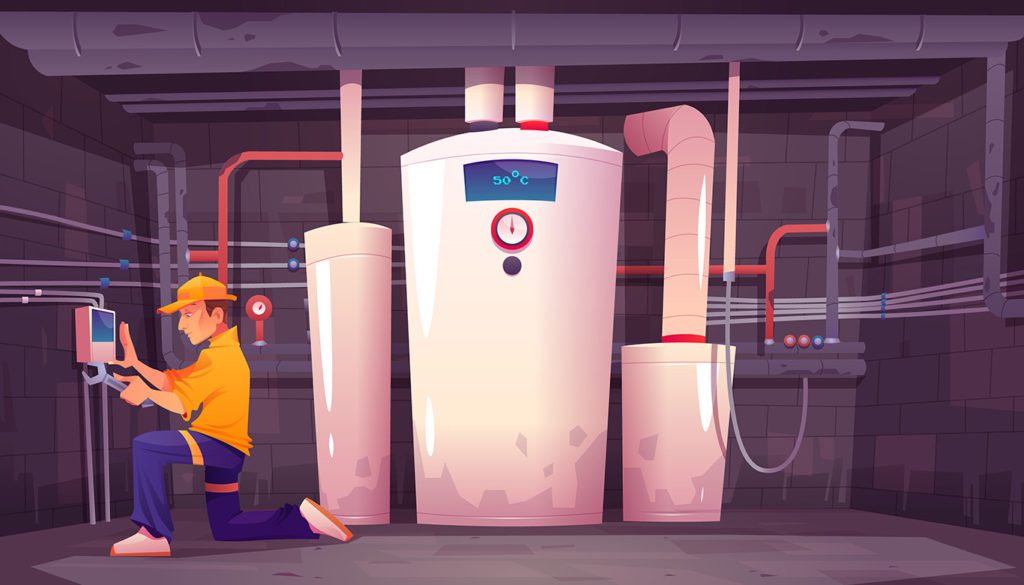The heat runs frantically during the winter, and there’s nothing you can do to keep up with demand. Thankfully, there are several things you can do to help reduce your water heating costs in the long run. Adjusting your water heater may seem like an intimidating task, but it doesn’t have to be if you know what you’re doing. After all, sooner or later every home will need to replace their water heater. Luckily, it’s a pretty standard maintenance task that just about anyone can tackle. Fortunately for us, about 20% of our homes already have advanced technologies installed that makes this process even easier. With that in mind let’s take a look at how you can adjust your water heater to increase its efficiency and lower your operating costs over time:
Check The Faucet For Leaks
The first thing you should do if you notice any drops in your water pressure is to look for leaks. Your faucet is a common source of leaks and can often be the root cause of low water pressure. There are a few easy ways to check for leaks. – The easiest method is to turn off the water source at the main. This will allow you to check for leaks without a faucet connected. – If you don’t want to turn off the water, then you can always use a hose to check for leaks. – If you’re not sure where your water meter is, then you can turn a garden hose on and check for leaks. You can also use a hydrant or prop up a bucket under the main to check for leaks.
Measure How Hot Your Water Heater Gets
Next, you’ll want to take a look at the temperature of the water coming out of your water heater. Although this may seem like a step back, it’s actually crucial to finding out if your water heater is operating at full efficiency. – The easiest way to measure the temperature of your water is to stick an inexpensive probe in the drain of your water heater. – You can also use a water temperature probe if you have one. Just make sure you don’t use high pressure water that could damage the probe. – If you don’t have a probe handy, you can always take a look at your water heater’s water temperature gauge.
Add An Inline Temperature Controller
The next thing you’ll want to do is add an inline temperature controller. While it seems like a minor adjustment, adding one of these will make all the difference in the world. – Not only will it reduce the water temperature that your heater receives, but it will also be able to shut your heater off before it overheats. – This will allow your heater to run significantly cooler and longer without actually consuming any energy. – This will save you money in the long run and allow your water heater to last longer without repairs.
Install A Demand Tank
Finally, if your water heater is getting too warm, you can always add a demand tank. A demand tank is exactly what it sounds like. – It’s a tank that you attach to your water heater. The tank will only send water through the hot side of the heater when your water demands it. – This is a great way to get the most out of your water heater and avoid it from overheating. – This is especially useful if you have a large family that uses a lot of water at once.
Add A Pre-Treat Filter
The next three adjustments are all focused towards improving your water filter. – First, you can install a pre-treat filter to remove impurities from your water before it even enters your home. – This will allow you to reduce the amount of chemicals you need to use in your water filters. – Next, you can install a post-treat filter. – This will allow you to reduce chlorine and other chemicals that were added to disinfect your water. – Finally, you can add a water softener.
Take Apart Your Old Tank And Drain It
The last thing you’ll want to do is take apart your old water tank and drain it. This may seem like a bit of a head-scratcher, but it will actually save you a lot of money in the long run. – When you take apart your old water tank, you’ll want to get as much of the water out of the tank as possible. – This means taking off the filler hose and anything else that connects to the water. – You’ll then want to replace the water in your old water tank with fresh water. – This will allow you to use your old water tank again until it breaks or wears out.
Install A Post-Treat Filter
The last thing you’ll want to do is add a post-treat filter. This will allow you to reduce chlorine and other chemicals that were added to disinfect your water. – This will allow you to reduce the amount of chemicals in your water. – This will allow your water to taste better, and it will also help to reduce the build-up of mineral deposits in your pipes. – This will save you money in the long run, and it will also reduce the amount of salt in your local water source.
Wrap Up
With all these tips, you’ll be able to adjust your water heater to increase its efficiency. This will allow you to use less water, which will save you money on your water bill. Another great thing about this is you’ll be able to save on your energy bill too. This will save you money in the long run, and it will also help to reduce the amount of salt in your local water source. That’s important because too much salt can damage your pipes.

